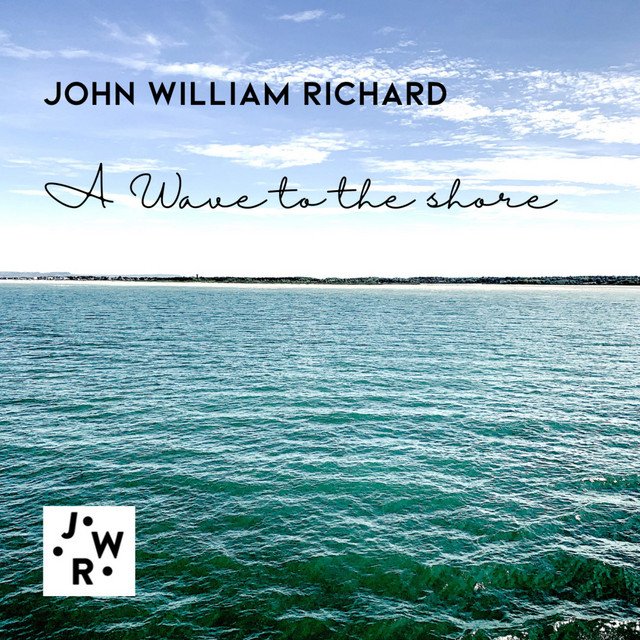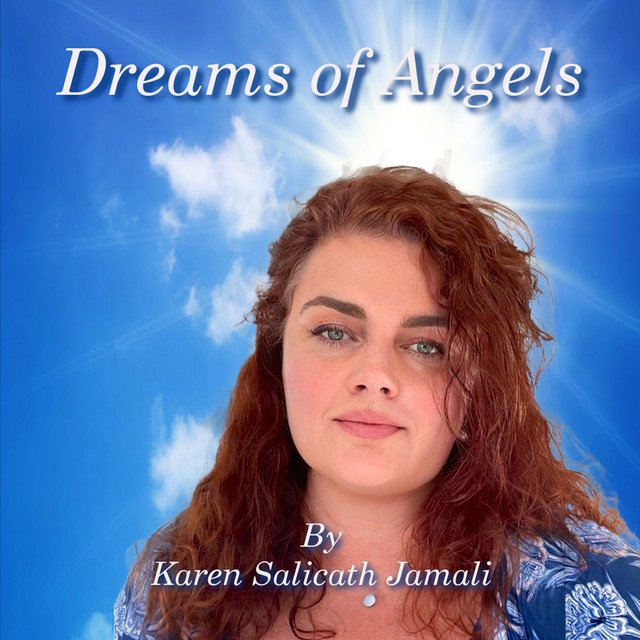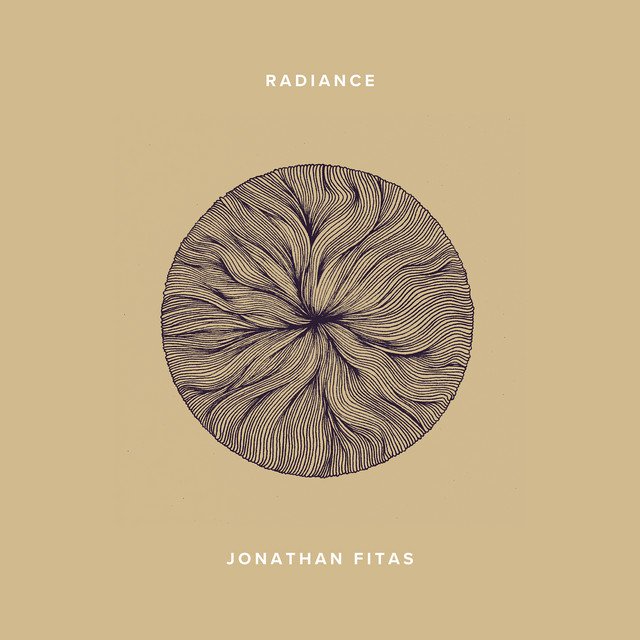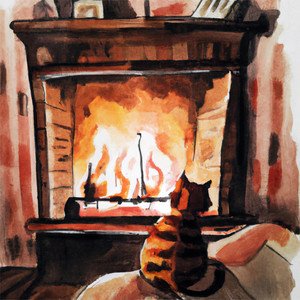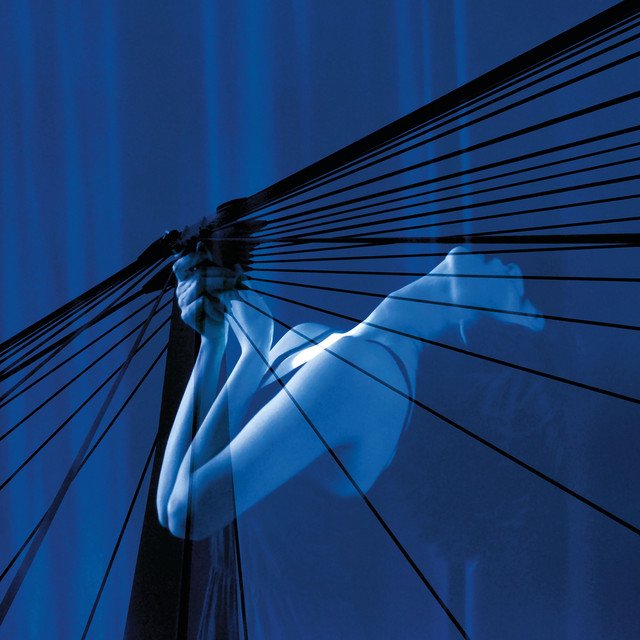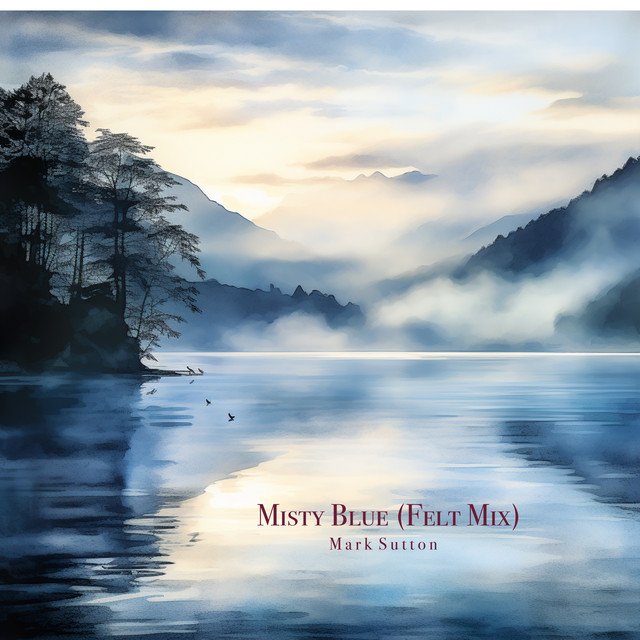Neoclassical Music ⁞ New Releases⁞ Artist Interviews⁞ Music News
Introduction of Neoclassical Music
Neoclassical music is a style of classical music that is characterized by its use of traditional forms and styles, as well as a focus on structure and balance. It is often seen as a reaction against the romantic style of music, which was characterized by emotion and passion, and was influenced by the ideas of the Enlightenment, which valued reason and classical learning.
Some of the key features of neoclassical music include the use of traditional forms such as sonata form, the use of clear and concise melodies, and the incorporation of elements of folk music and popular music. Neoclassical music also often featured a return to tonality, which is the use of a specific key or tonal center in a piece of music.
The neoclassical style has had a lasting influence on classical music, and it continues to be an important part of the classical repertoire
Favorite Neoclassical Music on Spotify
Favorite Neoclassical Videos on Youtube
Recent Neoclassical Interviews
Matthew Avery Interview on Nagamag
Nagamag:
What are the genres that describe better your music style?
Matthew Avery:
Classical, minimalism, ambient, melancholy.
Nagamag:
Few words about your musical background and career?
Matthew Avery:
I used to play guitar in several punk/hardcore bands from age 15-23 and then slowly began composing on piano over the next years. I find the sounds of the piano soothing and more conducive towards composing songs that inspire strong emotions. Guitar is still an amazing instrument that I enjoy playing, but the piano has taken over as my instrument of choice over the past few years.
Nagamag:
Do you remember your first connection of love to music that was the right impact to be a music artist now?
Matthew Avery:
My first real love of music came when I heard AFI's album "Sing the Sorrow". The guitar tones, song structures, lyrics, melodies and production quality were all so perfect in capturing a sort of romantic feeling of sadness. I would say my biggest inspiration for composing instrumental music came later from listening to movie soundtracks done by Nick Cave and Warren Ellis as well as Clint Mansell. They were able to inspire so much emotion with minimalistic piano-based songs.
Nagamag:
Most artists have a favorite song from a different music genre than the one they are producing music for... Which is yours?
Matthew Avery:
Caravels "Hanging Off"
Nagamag:
Of Course Nagamag would love to listen also which track from a similar artist you admire?
Matthew Avery:
Nil Ciuró "Inner"
Johan Famaey Interview on Nagamag
Nagamag:
What are the genres that describe better your music style?
Johan Famaey:
neo-classical, piano, musical, cinematic
Nagamag:
Few words about your musical background and career?
Johan Famaey:
I was four years old when I played my first tunes on the accordeon, taught by my father. It would culminate into my graduation as master in music at the Lemmens Institute in Leuven, Belgium in 2002. 18 years and countless performance in Europe and China and compositions later, a new episode has started in 2020. After very successful performances of my musical Hors in February 2020, based on the legend of Bayard, I've decided to pursue my love for performing on the piano and composing even more passionately.
Nagamag:
Do you remember your first connection of love to music that was the right impact to be a music artist now?
Johan Famaey:
Music was all around me, since my parents were musicians. My father was my first inspirator. Not only did he teach me how to play, he also let me appreciate all genres of music by playing records. I remember very vividly how I was not only enchanted by music of Tchaikovsky, Stravinsky and Schubert but also liked to play arrangements of old songs like 'Crying in the Chapel'. Wen I was a teenager, I heard the music of Ennio Morricone for the first time with the broadcast of 'Secret of the Sahara' on television. His music has had a very profound effect on my adoration for a melody that touches the soul. Music should be felt.
Nagamag:
Do you have any new music coming out?
Johan Famaey:
This year 2020, I will release more piano and orchestral music and even some tracks with vocals on it. For music videos, I work together with the amazing film producer María Cecilia Alguacil from Argentina. Moon Touch has been masterfully produced by her and also Time Passenger is an extraordinary beautiful video which will be shown for the first time September 25th on YouTube. It will be available on Spotify and other streaming platforms around half to end October.
Nagamag:
Do you have any concerts coming up?
Johan Famaey:
Due to covid, it is very difficult for us musicians to perform. Nevertheless, November 28 en 29 I will present a whole new show with my music with piano, backing tracks, dance, vocals and all whistles and bells in terms of light and sound. This will take place in my hometown in Hamme, Belgium.
Nagamag:
Most artists have a favorite song from a different music genre than the one they are producing music for... Which is yours?
Johan Famaey:
Symphony X "When all is lost"
Nagamag:
Of Course Nagamag would love to listen also which track from a similar artist you admire?
Johan Famaey:
Nils Frahm "Ambre"
Neoclassical Features
A WAVE TO THE SHORE – John William Richard
“Όσο κι αν παλεύεις μέσα στα κύματα του νου η θάλασσα θα σου βρει διέξοδο. Η νοσταλγική και θλιμμένη μελωδία χτίζει μέσα σου την ομορφιά για να μπορέσεις να δεις το φως, φτάνει να την ακούσεις προσεχτικά .Τα βαριά βήματά της θα σε αφυπνίσουν και ο ήρεμος ρυθμός θα σου δείξουν το δρόμο για το χαμένο νησί των συναισθημάτων σου.”
-Nagamag.com
White Angel – Karen Salicath
“Mesmerizing and incredibly calming atmosphere of this piano beauty engage deeply within first notes. Harmonic structure and composition is done in a beautiful way, reminiscing the movie themes with its depth that can be felt within this blissful keys. ”
-Nagamag.com
Expand to read review translations *
“Η μαγευτική και απίστευτα ήρεμη ατμόσφαιρα αυτής της ομορφιάς του πιάνου εμπλέκονται βαθιά στις πρώτες νότες. Η αρμονική δομή και σύνθεση γίνεται με όμορφο τρόπο, αναπολώντας τα θέματα της ταινίας με το βάθος που μπορεί να γίνει αισθητό μέσα σε αυτά τα μακάρια πλήκτρα. ”
-Nagamag.com
“La atmósfera fascinante e increíblemente relajante de esta belleza de piano se involucra profundamente en las primeras notas. La estructura y composición armónicas están hechas de una manera hermosa, recordando los temas de la película con la profundidad que se puede sentir dentro de estas maravillosas claves. ”
-Nagamag.com
The original review of “Karen Salicath – White Angel” is written in the native language that is spoken by the dedicated, for this song, Nagamag’s Neoclassical reviewer and followed by two translations*, of which the one depends from the country of origin of the artist “Karen Salicath” (United States) and the other one is translated to a different language than original review and the country of origin of the artist.
* Automatically Translated
Nagamag unveils the mesmerizing composition “White Angel”, an extraordinary creation of harmony and creativity that “Karen Salicath” offered to all of us. A Neoclassical song, which evoked an emotional voyage to our curator that desired to write down a unique review for “Karen Salicath – White Angel”. What also sets this song among the featured choices of Nagamag is the way that “White Angel” is enriched with Piano characteristics. “Karen Salicath – White Angel” is a rich music creation that deserves to be listened to again and again. Nagamag is honored to share this detailed music review by one of our experienced reviewers for Neoclassical music compositions. As always, Nagamag keeps up evaluating Neoclassical songs from across the globe, ensuring that all Neoclassical enthusiasts around the world have access to these auditory treasures .
Neoclassical home page where “Karen Salicath – White Angel” is hosted on Nagamag Music Magazine
Nagamag takes pride in supporting Neoclassical artists like “Karen Salicath”, providing music reviews and music discoveries like “White Angel”.
This music post about song “White Angel” by “Karen Salicath” is hosted in Neoclassical page on Nagamag.
There you can find similar Neoclassical artists to “Karen Salicath” and more Neoclassical, Piano songs like “White Angel” that have been carefully selected by Nagamag’s Neoclassical experienced curators and reviewed by Nagamag’s Neoclassical dedicated reviewers.
Learn everything about Neoclassical on Wikipedia
If you enjoyed “Karen Salicath – White Angel” but you have never listened before to any other Neoclassical song or you are interested in learning more about Neoclassical music gerne then click here to visit Neoclassical music page on Wikipedia.
Neoclassical music refers to a distinct style with common characteristics. Each genre carries its unique sound, instruments, and cultural influences. For a deeper understanding of Neoclassical music, Wikipedia provides comprehensive insights into its history, notable artists, and iconic works. Delve into the diverse and dynamic world of Neoclassical music through this valuable resource, broadening your knowledge around Neoclassical genre.
Latest Neoclassical discoveries
The Awakening – OHNomad
Οι νότες του πιάνου μοιάζουν σαν τα ταξιδιάρικα πουλιά που ελεύθερα πετούν. Η υπέροχη και χαρούμενη μελωδία διώχνει μακριά τι... >>> Read full review & listen to the song on Nagamag #piano #nagamag #musicmagazine #musicreview #review
Anatomy of Melancholy – Maria Luefing
Η φανταστική αυτή μελωδία είναι ένα ολόκληρο ταξίδι συναισθημάτων και ήχων. Η μελαγχολική πλευρά της είναι τόσο γοητευτική πο... >>> Read full review & listen to the song on Nagamag #neo #modernclassical #solopiano #marialuefing #germany #nagamag #musicmagazine #musicreview #review
Angel Michael -The Angel of Courage – Karen Salicath
Οι νότες του πιάνου παιχνιδίζουν κάτω από τον ζεστό ήλιο και μας φέρνουν τόσες αναμνήσεις. Η γλυκιά μελωδία με την απαλότητα ... >>> Read full review & listen to the song on Nagamag #piano #nagamag #musicmagazine #musicreview #review
Radiance – Jonathan Fitas
Ο ρυθμός με αργές κινήσεις μας πλησιάζει και κάνει τα μυαλό μας να αφήνεται στο απολαυστικό ταξίδι του. Η θεσπέσια μελωδία απ... >>> Read full review & listen to the song on Nagamag #piano #nagamag #musicmagazine #musicreview #review
Dream (Live from The Home Concert) – Alex Solely
Mesmerizing and incredibly calming atmosphere of this piano beauty engage deeply within first notes. Harmonic structure and c... >>> Read full review & listen to the song on Nagamag #piano #nagamag #musicmagazine #musicreview #review
Life goes on… – Nicolas Le Minh
Serene and very beautiful ethereal melodies and gentle piano textures with this enchanting and soothing composition. Its harm... >>> Read full review & listen to the song on Nagamag #piano #nagamag #musicmagazine #musicreview #review
Rainy Winter Day – Peace and Honey
Οι νότες του πιάνου ζεσταίνουν την καρδιά σου, όταν όλα γύρω σου είναι ψυχρά και αδιάφορα. Η φανταστική μελωδία με ενσυναίσθη... >>> Read full review & listen to the song on Nagamag #neo #modernclassical #solopiano #peaceandhoney #unitedstates #nagamag #musicmagazine #musicreview #review
Motionshine – Mario Verandi
Φανταστική μελωδία που η ενέργεια της μας δημιουργεί ενθουσιασμό και αφήνει τα συναισθήματα μας ελεύθερα να σχεδιάσουν το δικ... >>> Read full review & listen to the song on Nagamag #electronica #nagamag #musicmagazine #musicreview #review
Misty Blue – Felt Mix – Mark Sutton
Η ησυχία της φύσης υποδέχεται με χαρά την υπέροχη αυτή μελωδία. Γλυκιά και αισιόδοξη είναι σαν να μας περιγράφει την απίστευτ... >>> Read full review & listen to the song on Nagamag #piano #nagamag #musicmagazine #musicreview #review
Difference between Classical and Neoclassical Music
Classical music refers to a broad range of music written in the classical tradition, which encompasses a wide range of styles and forms. It is generally characterized by its formal structure and its use of traditional instruments and ensemble configurations.
Neoclassicism is a style of music that refers to the revival and use of classical forms and styles in music, particularly in the 18th and early 19th centuries. It is characterized by its use of clear, concise forms and a focus on structure and balance. Neoclassicism was a reaction against the romantic style of music, which was characterized by emotion and passion, and was influenced by the ideas of the Enlightenment, which valued reason and classical learning.
Some of the key differences between classical and neoclassical music include:
Time period: Classical music refers to music written during the classical period (1730-1820), while neoclassicism refers to music written after the classical period that incorporates elements of classical forms and styles.
Emphasis on structure: Classical music is known for its formal structure and the use of traditional forms such as the sonata and the symphony. Neoclassical music also places a strong emphasis on structure, but may also incorporate elements of popular music and folk music.
Emphasis on emotion: Classical music is often more reserved and formal in its emotional expression, while neoclassicism tends to be more emotional and expressive.
Use of tonality: Both classical and neoclassical music use tonality, but neoclassicism often incorporates a wider range of tonal structures and may experiment with atonality.
Use of traditional instruments: Both classical and neoclassical music use traditional classical instruments such as strings, woodwinds, brass, and percussion. However, neoclassicism may also incorporate elements of popular music and folk music, and may use a wider range of instruments.
Overall, the main difference between classical and neoclassical music is the time period in which the music was written, and the specific techniques and styles used by the composer. Classical music is generally more formal and reserved in its expression, while neoclassicism tends to be more expressive and may incorporate elements of popular music and folk music.
The most used instruments in Neoclassical Music
In neoclassical music, the most common instruments used are those found in the classical orchestra, including:
Strings: Violin, viola, cello, double bass
Woodwinds: Flute, oboe, clarinet, bassoon
Brass: Trumpet, French horn, trombone, tuba
Percussion: Timpani, snare drum, bass drum, cymbals, xylophone, marimba, triangle
Keyboard: Piano, harpsichord
These instruments are often used to create a wide range of textures and sounds, and are featured in many different types of classical music, including neoclassical music. In addition to these instruments, many composers also incorporate elements of popular music and folk music into their compositions, and may use a variety of other instruments such as guitars, bass, drums, and synthesizers.
It’s also worth noting that many composers and performers of neoclassical music are skilled in a variety of different instruments, and may switch between different instruments in order to achieve the desired sound and texture.
Vocals are sometimes used in neoclassical music, although they are not as common as instrumental music. When vocals are used in neoclassical music, they are typically performed by trained classical singers who have the ability to sing with precise pitch and control.
One common use of vocals in neoclassical music is in operatic compositions, where singers perform arias and recitatives in a style that is similar to traditional opera. Neoclassical opera is a subgenre of classical music that combines elements of traditional opera with elements of neoclassicism, and often incorporates elements of popular music and folk music.
In addition to operatic vocals, vocals may also be used in other forms of neoclassical music, such as choral music or vocal chamber music. Some composers may also incorporate elements of popular music or folk music into their compositions, and may use vocals in a more modern or experimental style.
It’s worth noting that the use of vocals in neoclassical music is highly dependent on the individual composer and the specific piece of music, and not all neoclassical compositions will feature vocals.



